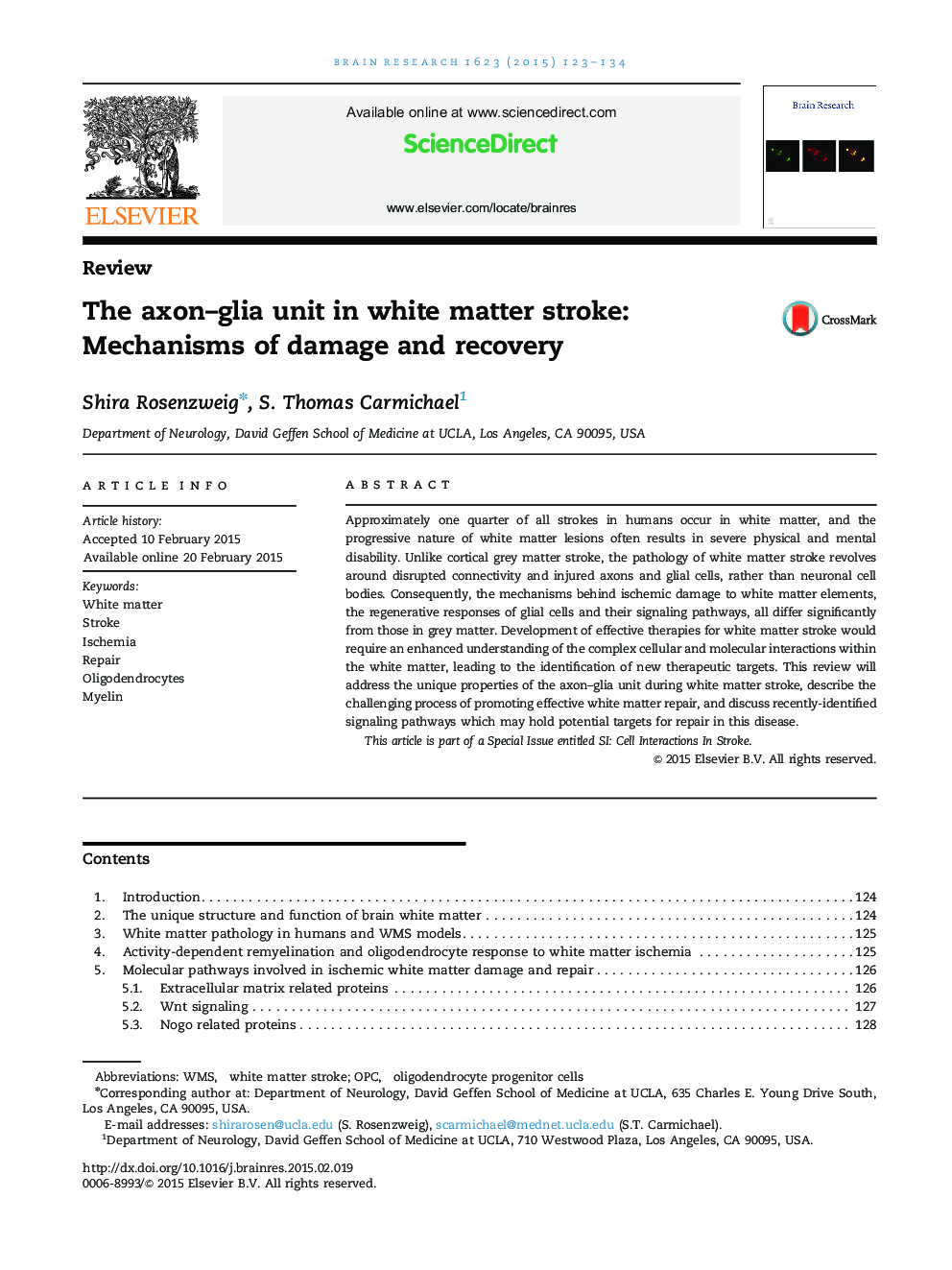| Article ID | Journal | Published Year | Pages | File Type |
|---|---|---|---|---|
| 4323739 | Brain Research | 2015 | 12 Pages |
•Unique properties of stroke in white matter are derived from the main white matter components: axons and glia.•A limited regenerative response takes place in the peri-infarct area following white matter stroke.•Neuronal activity, trophic factors and positive regulators contribute to repair and remyelination.
Approximately one quarter of all strokes in humans occur in white matter, and the progressive nature of white matter lesions often results in severe physical and mental disability. Unlike cortical grey matter stroke, the pathology of white matter stroke revolves around disrupted connectivity and injured axons and glial cells, rather than neuronal cell bodies. Consequently, the mechanisms behind ischemic damage to white matter elements, the regenerative responses of glial cells and their signaling pathways, all differ significantly from those in grey matter. Development of effective therapies for white matter stroke would require an enhanced understanding of the complex cellular and molecular interactions within the white matter, leading to the identification of new therapeutic targets. This review will address the unique properties of the axon–glia unit during white matter stroke, describe the challenging process of promoting effective white matter repair, and discuss recently-identified signaling pathways which may hold potential targets for repair in this disease.This article is part of a Special Issue entitled SI: Cell Interactions In Stroke.
